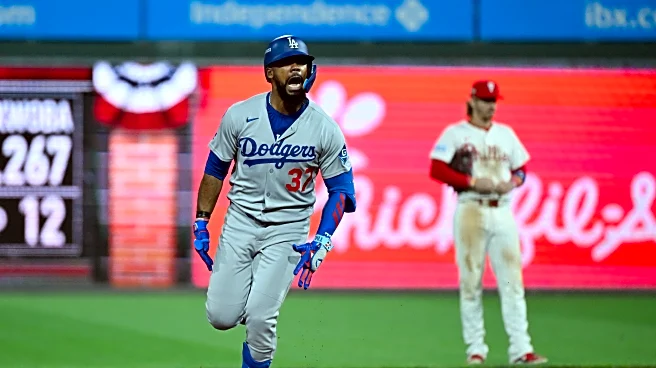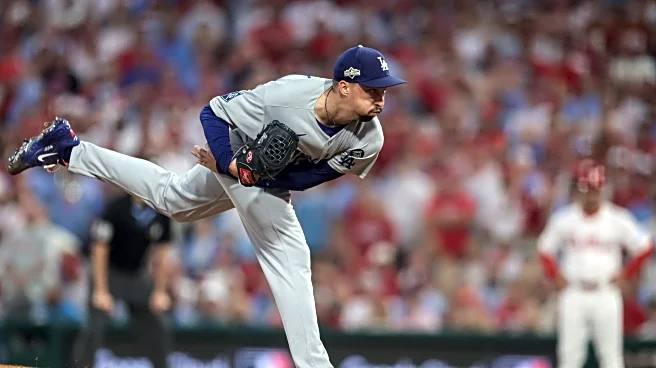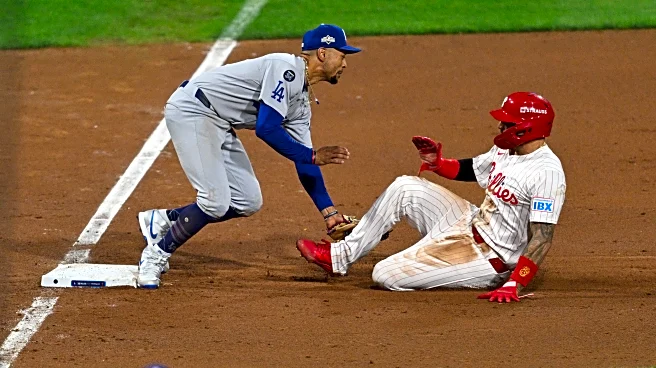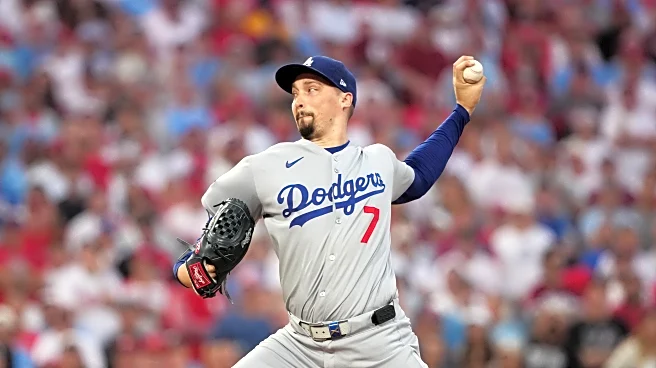What is the story about?
What's Happening?
Los Angeles Dodgers manager Dave Roberts faced scrutiny for his decision not to use Roki Sasaki, a reliable relief pitcher, in the ninth inning of Game 2 of the National League Division Series against the Philadelphia Phillies. Despite leading 4-1, Roberts opted for veteran right-hander Blake Treinen, who allowed hits to Alec Bohm, J.T. Realmuto, and Nick Castellanos, bringing the Phillies within one run. Roberts explained that Sasaki, who recently transitioned to a relief role, had not frequently pitched in consecutive games, and he wanted to avoid overtaxing the rookie. Ultimately, Sasaki was called upon to secure the final out, helping the Dodgers maintain their lead.
Why It's Important?
The decision highlights the challenges managers face in balancing player workload and game strategy, especially during high-stakes postseason games. Roberts' choice to initially bypass Sasaki underscores the importance of managing a pitcher's health and effectiveness over a series. The outcome of such decisions can significantly impact a team's postseason success, influencing both the immediate game results and the long-term performance of key players. The Dodgers' ability to maintain their lead despite the initial setback demonstrates the depth and resilience of their bullpen.
What's Next?
The Dodgers will continue their series against the Phillies, with Game 3 scheduled in Los Angeles. Roberts may need to reassess his bullpen strategy, considering Sasaki's performance and the team's needs in upcoming games. The decision-making process will likely involve evaluating the physical readiness of pitchers and the tactical requirements of each game. The outcome of the series could hinge on how effectively Roberts manages his pitching staff, particularly in high-pressure situations.
Beyond the Headlines
Roberts' decision reflects broader themes in sports management, such as the importance of player health and the strategic use of emerging talent. The situation also highlights the evolving role of analytics in sports, where data on player performance and health can guide managerial decisions. This incident may prompt discussions on the balance between traditional coaching instincts and data-driven strategies in professional sports.
AI Generated Content
Do you find this article useful?















